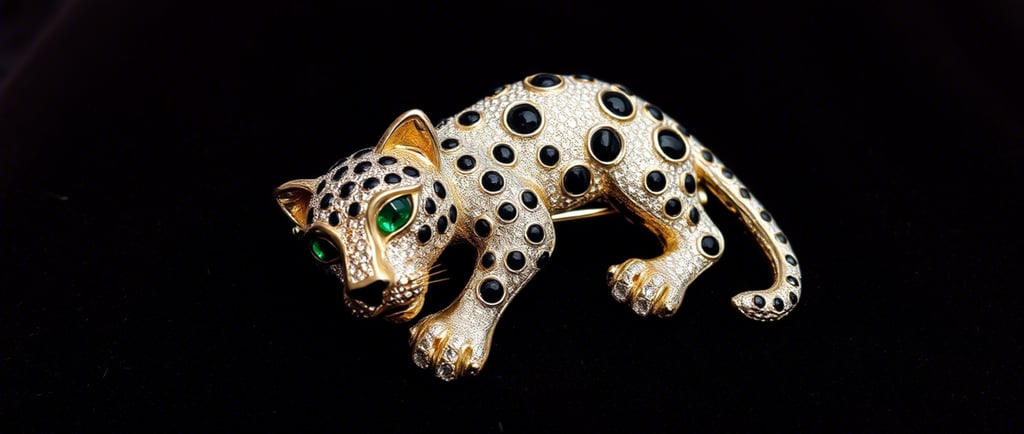Unveiling Cartier's Secrets of Timeless Innovation
10/20/20253 min read


In the hushed ateliers where masterpieces are born, time moves differently. Hands that have perfected their craft over decades reach for tools with practiced precision, while eyes trained to see what others cannot scan for perfection measured in microns. This is the world of Cartier, where innovation has never announced itself with fanfare, but rather whispered through the centuries with quiet confidence.
The Genesis of an Icon
The story begins in 1847 Paris, when Louis-François Cartier took over his master's workshop. What distinguished Cartier from the outset was not merely technical prowess but an uncanny ability to anticipate the evolution of taste. While competitors remained tethered to prevailing aesthetics, Cartier's workshop cultivated a distinctive philosophy: design should simultaneously honor tradition while advancing boldly into uncharted territory.
This forward-thinking approach crystallized in 1904 when Brazilian aviator Alberto Santos-Dumont complained to his friend Louis Cartier about the impracticality of pocket watches during flight. The resulting Santos wristwatch, with its geometric case and exposed screws, marked one of the first purpose-built wristwatches for men, effectively challenging centuries of timepiece tradition.
Geometry Becomes Poetry
The early 20th century witnessed Cartier's geometric revolution. As Art Nouveau's organic flourishes dominated, Cartier pivoted toward clean lines and mathematical precision. The Tank watch, inspired by the aerial view of Renault tanks during World War I, demonstrated how industrial forms could achieve timeless elegance. This paradigm shift was revolutionary, transforming utilitarian shapes into objects of desire.
The maison's embrace of geometry continued with the 1924 Trinity ring, featuring three interlocking bands of different gold colors. Its deceptive simplicity masked complex symbolism and technical innovation, establishing a design language where restraint became the ultimate expression of luxury.
Color as Revolution
While competitors focused on maximizing the display of diamonds, Cartier pioneered the art of contrast. The introduction of the "Tutti Frutti" style in the 1920s, featuring carved emeralds, rubies, and sapphires in vibrant compositions, revolutionized high jewelry by celebrating color as the protagonist rather than merely a supporting character.
This chromatic courage extended to unexpected material pairings. The juxtaposition of diamonds with black onyx in Art Deco creations established a visual tension that remains distinctively Cartier. Later, the introduction of panthers with emerald eyes and onyx spots would cement this approach as signature rather than experiment.
The Architecture of Objects
Cartier's design philosophy has consistently treated each creation as architectural space rather than decorative surface. The Mystery Clocks of the 1910s, with hands seemingly floating in transparent crystal, exemplify this approach, creating depth and dimension where others saw only flatness.
This architectural thinking reached its apex with the Panthère brooch of 1948. Rather than settling for a flat representation, the three-dimensional creature seemed poised to leap from its wearer's lapel. The piece demonstrated Cartier's understanding that truly enduring design exists not just as image but as presence—occupying physical and emotional space simultaneously.
Heritage as Innovation's Canvas
What distinguishes Cartier's innovation model from many luxury houses is the relationship between past and future. Rather than mining history for superficial motifs, Cartier designers approach heritage as methodology—extracting principles rather than patterns.
The Crash watch of 1967 exemplifies this approach. Reportedly inspired by a Cartier timepiece deformed in a car accident, the surrealist design maintains perfect functionality within its deliberately distorted case. The creation demonstrated that innovation need not always mean adding elements but sometimes involves challenging form itself.
The Digital Atelier: Design Evolution for Tomorrow
Looking forward, Cartier faces perhaps its most significant design challenge: maintaining handcrafted excellence while embracing technological advancement. The coming decade will likely witness unprecedented integration of traditional craftsmanship with computational design methods.
Early experiments suggest promising directions, utilizing advanced materials like ceramic composites that offer new structural possibilities while maintaining the tactile quality expected of a Cartier creation. Digital modeling now allows for testing thousands of stone placement variations before a single gem is set, resulting in optimized light reflection while preserving the human touch in final execution.
The next frontier may involve personalization systems that maintain design integrity while allowing subtle customization, perhaps using machine learning to suggest modifications aligned with Cartier's design principles rather than client whims.
The Enduring Whisper
What remains constant throughout Cartier's design evolution is the recognition that true luxury never shouts. The maison's greatest innovation may be understanding that in a world of increasing noise, the quiet authority of excellence speaks volumes. Each creation carries forward this legacy, whispering rather than declaring its significance.
For professionals in the luxury space, Cartier's lesson is invaluable: innovation that endures does not chase temporary fascinations but rather anticipates fundamental shifts in how beauty is perceived. By maintaining this delicate balance between heritage and progress, Cartier's design approach offers not just aesthetic pleasure but intellectual engagement, the ultimate luxury in an increasingly superficial marketplace.
The whisper continues, for those discerning enough to listen.
